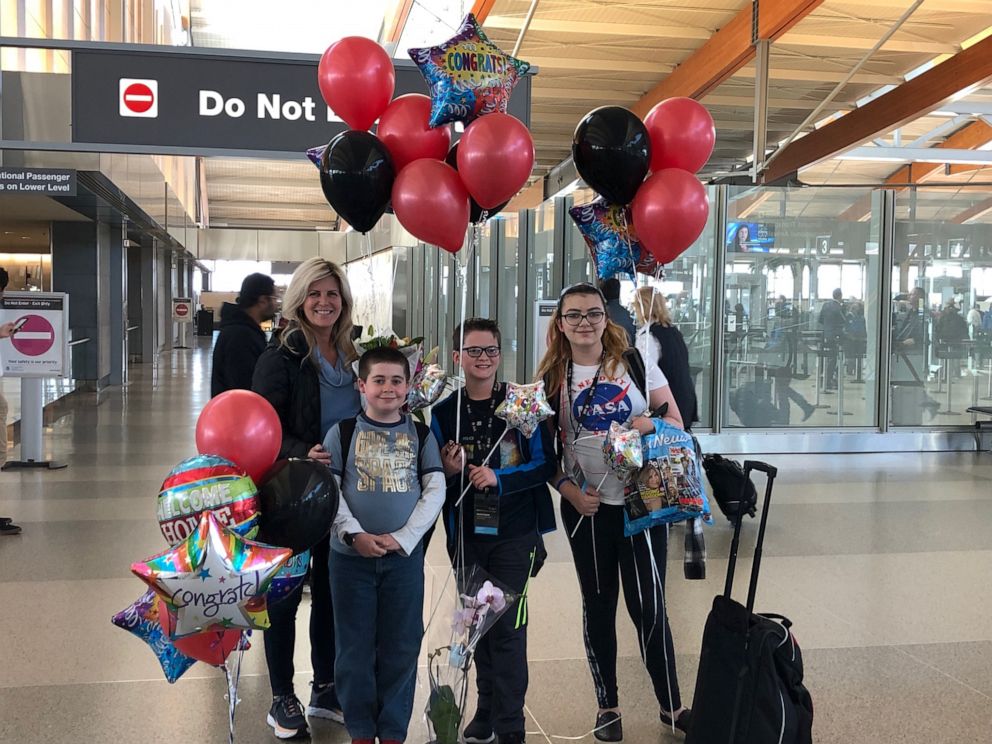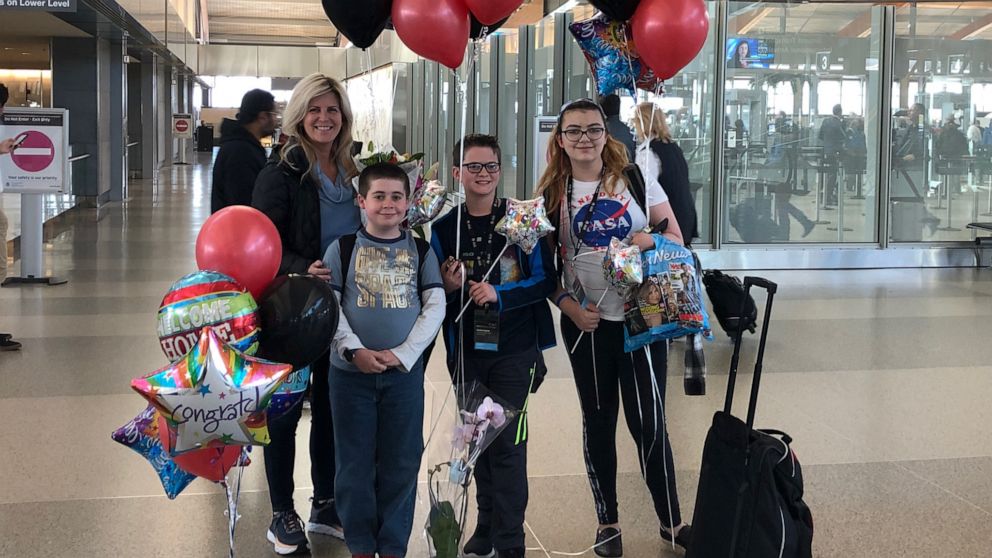6th-graders design 'Smart School Bus Stop Sign' to help save bus riders
Though the school bus is the safest vehicle on the road -- students are 70 times more likely to get to school safely compared with travelling by car -- almost one-third of the students who died in school-transportation-related incidents from 2006 to 2015 were killed approaching or leaving the bus, according to the National Association of State Directors of Pupil Transportation Services.
Last October, three siblings were boarding a school bus when they were struck and killed by a motorist. In 2018, school bus drivers across the nation observed about 84,000 stop-arm violations -- when a driver illegally zips past a stopped school bus that has its lights flashing.
Now a group of 19 sixth-graders has created a device to help drivers see exactly when and where a bus will stop.
Students at Holly Grove Middle School in Holly Springs, North Carolina, have designed the "Smart School Bus Stop Sign," which uses technology to activate flashing lights and alert drivers before the bus arrives.

The device was a part of the students' submission that won top prize in the Samsung Solve for Tomorrow contest. Debbie Schelin, a sixth-grade science teacher who oversaw the project, said a mobile app tracks bus routes and stops, and it sends signals to stop signs as the bus approaches. When the bus is 400 feet away, the lights flash yellow, then red as the bus arrives.
"There is a school bus ahead sign, but there is no actual school bus stop sign," Debbie Schelin told ABC News in a phone interview. "When we're driving, and there's a school bus ahead, we don't know when the bus is going to stop. We don't even know when the stop arm is going to come out."
Schelin says the students started working on the design in October after one of the students saw her friend nearly get hit by a car whose driver ignored a stop arm. She says the students received help with designing the "Smart School Bus Stop Sign" from North Carolina Department of Transportation engineers, police officers and Wake County Public School Transportation administrators.
The team won $110,000 in the contest and also will be spotlighted at a luncheon in May in Washington, where the students will present their project to congressional leaders.




